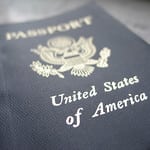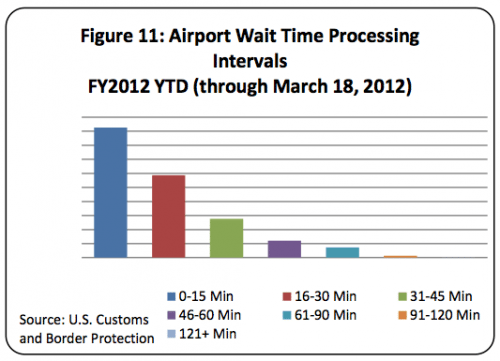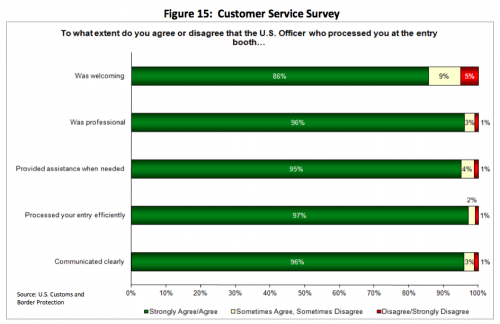Skift Take
A long delay at the border crossing for arriving passengers is the worst way to welcome both residents and visitors to your country. Although times improved ever so slightly this year, CBP should look to greater flexibility among its staff to deal with traffic surges.
The White House released a progress report on the government’s efforts to increase incoming tourism as well as improve travelers’ processing experience. It’s not given an actually grade, but if it did the port of entry processing should receive a grade of B+ for its improvements so far.
International air travel volume has steadily increased since 2008, resulting in longer wait times at ports of entry; however, those times have been back down since early 2011. Several programs to expedite the process have been introduced and continue to expand, and passengers report over 85% satisfaction with Custom and Border Protection officers.
Port of entry wait time has increased since 2009
Despite efforts to streamline and speed the port of entry process, the overall wait time has increased from the beginning of 2009 until present for several reasons. Air travel grew by nearly four percent each year as the industry rebounded from the recession and the highest number of U.S. and foreign passengers and crew on record — 95 million — was processed at international airports in 2011.
Also contributing to lengthier wait times is the increased use of larger aircraft carrying more passengers. Essentially, the increasing number of incoming passengers that needed processing grew more quickly than the CBP staff could process them.
Wait time has decreased by slightly over a minute in the last year
The average wait time for CBP processing is less than 30 minutes for 75 percent of travelers at all airports. The significant improvements in the last year alone have been aided by data that helps CBP prepare for high volume processing periods.
The wait time is even less for U.S. travelers flying domestically at less than 20 minutes at 99 percent of U.S. airports in 2011.
Government expands initiatives to expedite entry process
The government is working to reduce wait times through several initiatives: The “One-Stop” program expedites the entry process for international travelers without checked luggage at IAH in Houston and JFK in New York. Express Connect quickens the entry process for international travelers with closely scheduled connecting flights at 11 U.S. airports.
The CBP suggests that wait time for all travelers will decrease as this and similar programs expand as even those that aren’t registered in the program will benefit from fewer passengers waiting in line.
The state’s efforts haven’t gone unnoticed. In the fall of last year, over 85 percent of surveyed passengers agreed that the U.S. Officers at model ports were professional, efficient, helpful, and easy to communicate with.
The Daily Newsletter
Our daily coverage of the global travel industry. Written by editors and analysts from across Skift’s brands.
Have a confidential tip for Skift? Get in touch
Tags: customs, government, usa, visas


